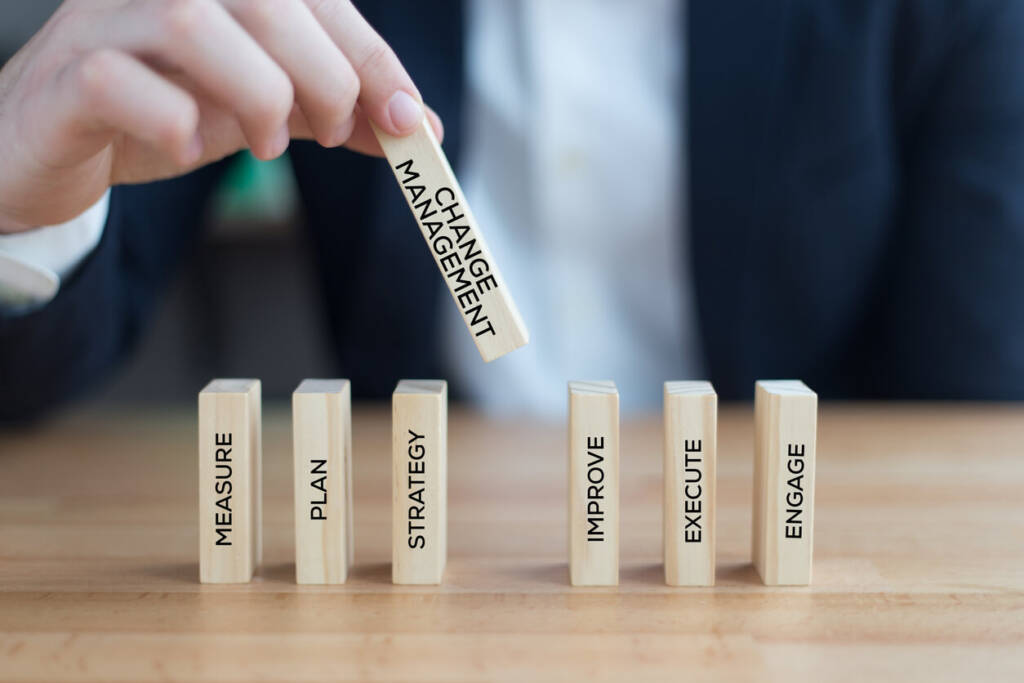As a native Texan, it’s second nature for Professor Carlton O’Neal to share his insights, experiences, a couple anecdotes, and even a few jokes when explaining why he gets so excited about teaching entrepreneurship. “To me, it’s the greatest gig going and I love it. I love helping students who are looking to get into startups and entrepreneurship,” he says. “[At] what other point in history could people have said ‘that’s what I want to go and do’ and then, with today’s opportunities and resources, go out and actually achieve it? It’s a great time where you can really do whatever you want.”
Professor O’Neal’s perspective comes from his 25 years in the technology, global entrepreneurship, marketing, sales and business development spaces. He began his own career in various management positions and practicing corporate, technology and securities law. His understanding of entrepreneurship was shaped through his experience in VP and CEO positions with various start-up and public technology companies – including GigaRiver, Proximetry, Alvarion, Bosch Telecom and Texas Instruments.
Perhaps the highlight of his storied career is his role in the creation of the first commercial 4G standard in the world, called WiMAX.
Get Your Guide: The 4 Ways to Break Into a Tech Career (Plus 8 Lucrative Tech Careers to Pursue)
On His Own Startup Success
“My name’s on the patent for WiMax,” O’Neal happily notes. “Back then everyone was on 2G, which was where you had digital phones and an analog network. With 4G, everything is digital, and our company Ensemble invented the first true broadband wireless standard. It enabled broadband communication.”
Ensemble was originally a pioneer of LMDS (Local Multipoint Distribution System) equipment, making point-to-multipoint systems for the 10GHz to 45GHz bands. At the time it was looking for ways to take advantage of the Peace Dividend, which was an initiative to downsize military assets and transfer the freed-up resources for civilian use. Some of those assets were the wireless frequencies formerly used exclusively by the U.S. military.
“(The government) said we could use them commercially, and one was 28GHz,” O’Neal explains. “Now, 28GHz was like saying you’re going to build a hotel on the moon, it was really a huge step forward, and brought its own challenges. Because Ensemble set out to build a 28GHz radio, our broadband system couldn’t use silicon, like many of our competitors were using, because at that high of a frequency the electrons vibrate so much, they’d vibrate right off the chip. So we had to use gallium arsenide for a more stable substrate.”
Prior to coming onboard at Ensemble, Professor O’Neal was working at Texas Instruments, which, as a defense contractor, was already familiar with working at those high frequencies, and in fact actually had a gallium arsenide fabrication facility. “I was working in a division of TI that was focused on innovation, almost like its own startup, similar to what roughly half a dozen other defense contractors were doing,” O’Neal says. “Ensemble reached out to me, and they were a true, Silicon Valley-style of start-up. One of about a half a dozen ‘true startups’ at the time also working on the problem of figuring out 4G.”
Excited by the opportunity, Professor O’Neal joined the Ensemble team and helped to make history. “Back then I kept thinking, are people ever going to say the word ‘broadband’?” he remembers. “As a marketing person I kept thinking about that word. It was a nerd word, like what radio used to be, where only people working in the field even knew what it was. But I could see that potential, that even my grandmother would be saying that word.”
Get Your Guide: The 4 Ways to Break Into a Tech Career (Plus 8 Lucrative Tech Careers to Pursue)
On Today’s Greatest Challenge for Entrepreneurs
Having worked for both large enterprises and smaller startups, both in Texas, California and elsewhere, Professor O’Neal had gained deep insights into the challenges facing entrepreneurs. When asked about the greatest challenge for today’s entrepreneurs, he immediately shares his perspective.
“When I was getting started, one of the biggest challenges was just finding people. Luckily, these days, there’s a lot of people chasing that dream,” he says. “People see startups now, they see the success, and they believe that they can do just as well. Which is great! We’ve got startup incubators, we’ve got money flowing in, the market couldn’t be more ripe for startups. Now, actually, the number one thing that hurts startups is [lack of] flexibility. Bottom line, you have to be more flexible than your original idea.”
He offers an example. “Say that you have a person who is smart, energetic — they get an idea. They set out to get things done, they focus like crazy. They assume that focus is what’s going to solve the problem and bring them success.
“And that’s because having a startup or being entrepreneurs, that’s almost an inhuman combination of risk. As an entrepreneur you decide to leave your job, you borrow money from friends and family, you’re feeling that pressure. And some people feel that – because of that pressure – their project has to work. If you take a piece of coal, all that pressure is going to turn a coal into a diamond. But the truth is that some things aren’t correct, you’re going to get it wrong.”
Professor O’Neal makes sure to emphasize that it’s not the fault of the entrepreneur that things don’t work out. “You make a prediction based on what you thought that the market was, but you come to find out that it was actually something else. In that case, it’s your flexibility that saves you.”
In thinking about what makes good leadership in the startup space, Professor O’Neal states that it’s not focus, motivation or coaching. “Ultimately, [leadership is] this combination of being the most focused and intense version of yourself, but also the most flexible and accommodating. It’s almost impossible to be that way, which is why so many startups fail.”
He observes that sometimes it’s ego or stubbornness that really gets in the way of success. “There are a ton of entrepreneurs who are tied to their ‘thing’ – their project, their idea or their solution. It’s like their identity is tied to it – ‘this is what I do!’ But ultimately it’s not going to make a lot of money, it’s not going to go IPO. But they feel if they change it, if they pivot, then it’s not their idea anymore. What you have to understand is that what you start out with isn’t necessarily where you’re going to find success.”
Professor O’Neal laughs. “Take YouTube, it’s a great example. Started by three single engineers who weren’t looking to change how people use online video — they were trying to get dates! YouTube started as a dating site where people put up videos and looked at other videos to try and find dates. You look at it now, it’s the most successful video company of all time — but it didn’t start that way.”
He summarizes: “Everybody’s got ideas. They see something, they get an idea and then they’ll say ‘Hey I want to do a startup about that.’ But it’s not the idea that finds success; it’s about getting intimately familiar with an industry or industry segment and pivoting to what those needs are.”
On What the MITE Program Offers Its Students
In discussing the program’s offerings, Professor O’Neal beams with pride. “What MITE does is, we debunk the myths around startups,” he explains. “These myths that it’s all about the idea. That you just need to build a better mousetrap. That you need to work round the clock and commit so hard you’re just eating canned tuna fish for a year and you’ll find success. That’s not how it works. What we instruct our students on, it’s the generation of value, the generation of something that people need and want and will pay for.”
He thinks for a second, then launches into another example. “Jeff (Teza) and I will hear from a student who has an idea. Something like, ‘I want to do a startup where you order a pizza directly from the voice assistant on your phone. So, we’ll hear them out, but our advice for them is always to go deeper. Find out how the pizza business works, find out where the money is made. That’s how you have to be flexible.”
He continues, “And then in their research, what they’ll usually find is that the actual problem that you can solve isn’t the convenience of ordering pizza over a voice app — the problem is something like, the mozzarella delivery business is holding up pizza making. That’s what you can improve.”
He explains, “There’s always some quirky way of doing things that could be improved upon. And when you find that, then you can inform people about it, surprise them, and explain how you’re going to change it with your startup. If you can explain it in a way that shows how they can be successful, then they’re going to help you be successful.”
Developing that mindset and the skills to support it is the foundation of the MITE program and its curriculum.
Get Your Guide: The 4 Ways to Break Into a Tech Career (Plus 8 Lucrative Tech Careers to Pursue)
Finally, On Finding His Place at USD
When asked about why he’s at USD, Professor O’Neal is at his happiest. “It’s funny,” he laughs, “as my kids were starting to go off to college, I was at the point in my career where I had retired, and was a stay-at-home dad. I was doing some teaching on the side for adult learning, and loved doing it. I just started thinking that this is what I wanna do.”
So, just like he had done so often in sales and marketing, Professor O’Neal started reaching out to people. He got in contact with the marketing department at USD and was asked to develop a course. From that point, it all felt natural. “Let me tell you,” Professor O’Neal smiles, “once I started full time… what an epiphany. Teaching for me has been a total epiphany. I have students come in and say ‘Professor, you changed my life.’ I’ve made connections for life.”
For Professor Carlton O’Neal, being at the USD MITE program couldn’t be more of a natural fit. “I tell you, if you wanna give back, and if you like to talk, then it’s the perfect career.”
Visit the University of San Diego’s online Master of Innovation, Technology and Entrepreneurship degree homepage to learn more.



